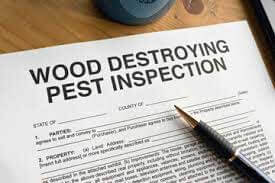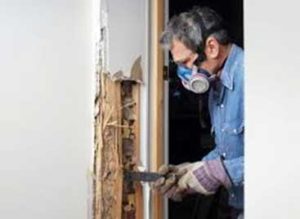Hunting for termites – should you do it yourself?
Finding termites in your home before they do any serious damage could save you thousands, so it’s important to have your house checked once in a while!
This can be easily determined by having a pest inspection done by professionals, or if you have enough basic knowledge about termites and termite damage, you could even do it yourself.
The benefits of having a pest inspection done by a qualified inspector just assures you that your inspection is done thoroughly and all areas and timber have been assessed. A pest inspector should not treat the pests themselves, rather they are there to make recommendations of what kind of action you should take, if any are necessary.
When buying a home, it’s a good idea to get an inspection like this to help you decide whether the home is worth purchasing or not. You can request to the seller to have this done as well.
If you own your own home and would like to carry out an inspection yourself, you will need to know which areas need attention and what to look out for, as well as what kind of equipment is necessary both for inspecting and safety.
The main problem areas
Two of the main areas that would be necessary to inspect are the roof void or any roof spaces, and the subfloor (provided the house has an accessible subfloor). If you’re going to find termites in your home, it’s likely that you will find them in one or both of these areas.
Why? Simply because the environment is ideal for termites. Little airflow and no human activity or interference creates a comfortable place to set up shop. Areas under or over kitchens or bathrooms will create a higher content of moisture, this helps termites keep themselves comfortable and safe in their new home. Their food source then comes from those things that hold up the house! They chew away on the abundance of timber that is, in many houses, most prominent in the subfloor and roof spaces.
Other areas to look at
Whilst these two areas are the most susceptible to termite damage, do not rule out the other possibilities.
Look in your front or back yard for any stacks or piles of timber that have been left over time, as this looks like an all-you-can-eat buffet to termites. Also inspect surrounding trees or fences for any damage, as the next target could be your home if it isn’t already!
Stay safe with the right equipment
Next thing you should consider is equipment and safety. Particularly when moving around underneath the house in the subfloor or in the roof spaces, you must make sure you have the proper respiratory gear. In these areas there is likely to be a lot of dust and different particles or fibres floating around, especially once you are in there moving around and stirring up the air that has settled over time. Be sure to have overalls and possibly a hard hat depending on the condition of the area you are inspecting.
In darker areas it’s certainly beneficial to have a torch with you to check for any damage or activity, and something to knock on timber, like the back of a screwdriver, to listen for any hollow sound.
Do you research
Part of the preparation is also doing your research. Know your enemy. Know how they behave, what they eat and where they live. It also wouldn’t hurt to know a little about the biology of trees either, and why different kinds of pest are attracted to certain kinds of wood.
Peace of mind
Doing an inspection like this yourself is fine if it’s just a simple check up on your home. But, if you are looking to be completely sure there’s nothing there, or to know what to do when you find something that could be termites, you should consider getting a recognised professional in to do the job.
As a seller the benefit is that you can prove or disprove that there is any termite damage done to the house, and therefore give the buyer peace of mind knowing a professional has inspected the house and provided a report. If in this case there is damage, it also means that they can provide the report as proof that this was taken into account at the time of valuation on the home, helping to avoid this becoming a bargain point.







